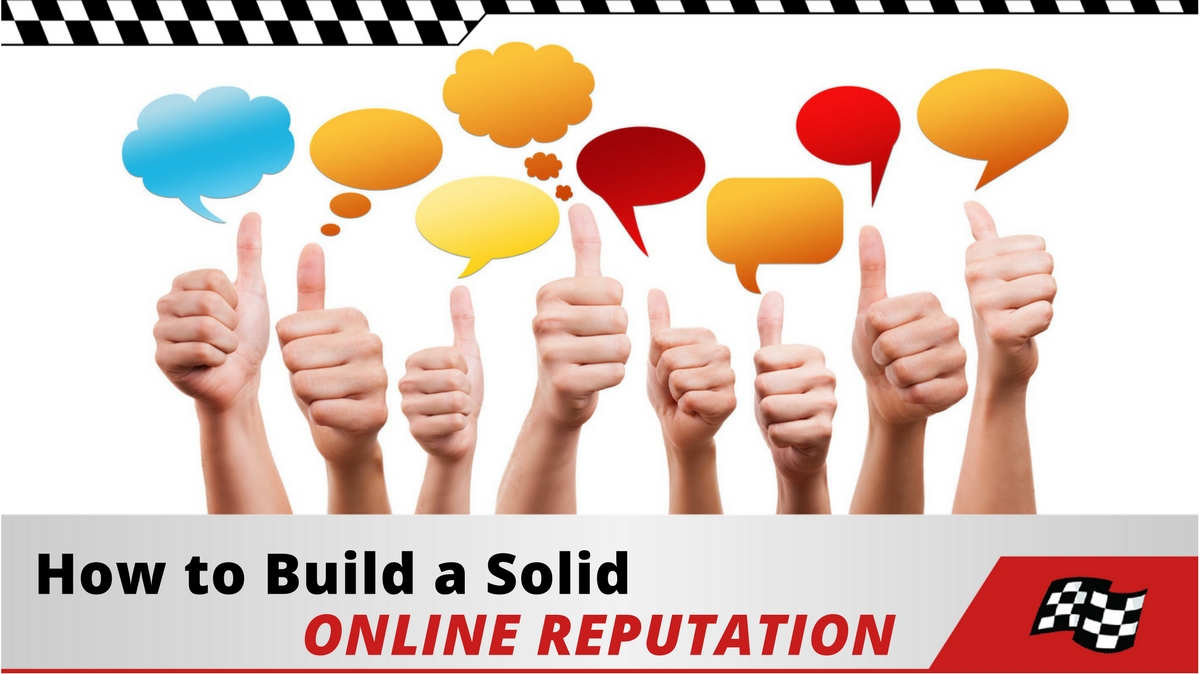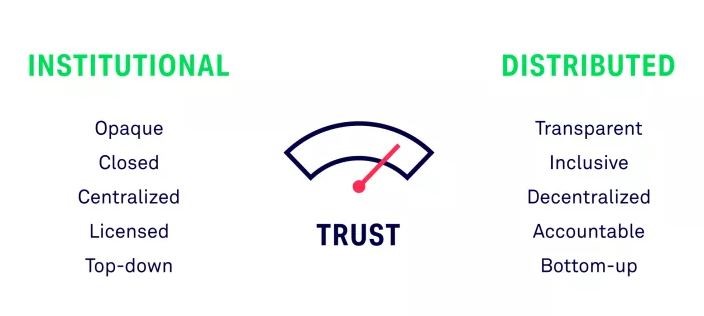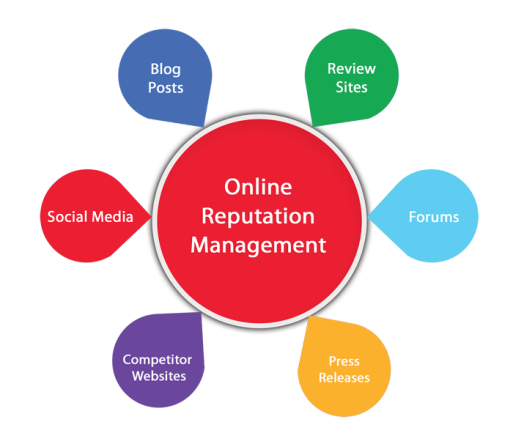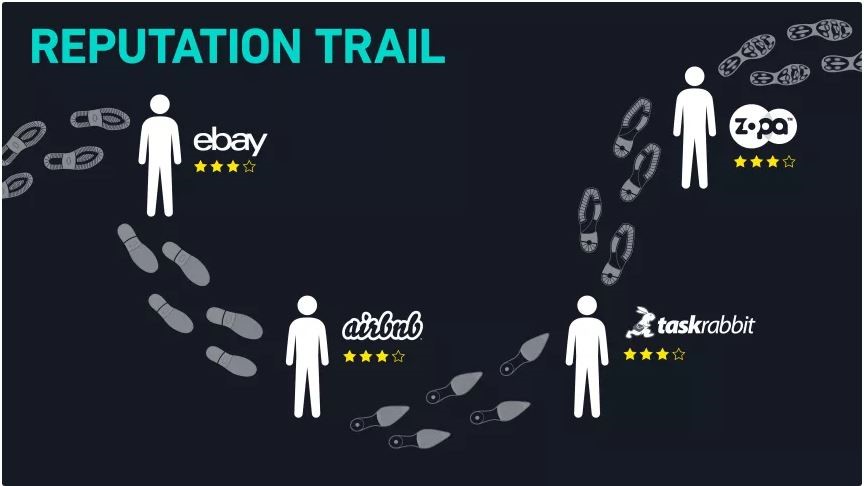
Say you were planning for an upcoming vacation. Chances are, you’d be using some of these online platforms or apps to make your trip possible.
- Trip Advisor to identify suitable things to do, places to see, and hotels to stay in
- Priceline.com or Hotels.com to book the right hotel
- Airbnb if you prefer to stay in somebody’s home
- Uber or Lyft for local transport
- A restaurant review website to choose the best places to dine
Beyond the usual decision-making parameters like budget, availability, and location, there’s one indicator which you’d probably pay more attention to than any other. One that may change your entire vacation plans.
Namely, the online reputation of the establishment or service provider.
Power Shifts in the Reputation Economy
According to renowned “trust expert” Rachel Botsman (author of Who Can You Trust?), the reinvention of the marketplace through technology has changed the power dynamics between brand and customer.
As our economy moves towards greater sharing, organizations and service providers need to be more transparent, accountable, responsive, and decentralized in how they operate.
Beyond the usual differentiators like quality, price, convenience, speed, and customer experience, they need to be both trusted (right experience and knowledge) and trustworthy (right values and beliefs).

Courtesy of Rachel Botsman
Trust can only be achieved if your organization has built up a good online reputation. This is usually determined by your online presence in multiple touchpoints such as the following:

To build a positive online reputation, follow these steps and implement them in your organization.
#1 Begin with Your Website
First and most importantly, ensure that your brand website is well-designed and built. This is your digital home base and thus, the most important platform on which to manage your reputation.
Compare the User Experience (UX) of your website against your most noteworthy competitors. Ask yourself these questions:
- Is the language and design of the website specifically developed for your customers?
- Does it address your customer’s needs, wants, and desires?
- Are calls-to-action (CTAs) on your web pages clear and relevant?
- Does your website load quickly? Is it mobile responsive?
- Is the design consistent with your brand identity in terms of its colors, themes, logos, tone of voice, and images used?
- Do you have “trust marks,” like your certifications, quality marks, accolades, and customer testimonials, on your home page?
- Is it easy to navigate between pages?
#2 Harmonize Your Social Media Pages and Accounts
Next, look at your online brand pages and accounts on Facebook, Twitter, Instagram, LinkedIn, YouTube, and other social media channels.
Check that these channels have a consistent look and feel. Rewrite your “About Us” sections to ensure that your brand and corporate descriptions are consistent, with slight variations to accommodate the space available for different social channels (e.g., fewer words for Twitter and Instagram).
Once the initial foundations are set, check that the content which you create or curate is aligned to your brand identity and positioning. Avoid sharing content that is entertaining for your users but does little to build your brand.
#3 Respond to All Online Feedback
Ensure that you respond to any customer feedback, complaints, or inquiries on your social media pages. When doing so, adopt good customer service practices, and make their path as convenient and pain-free as possible.
To ensure that you meet your user’s expectations, it may be useful to establish clear community guidelines on your social media or forum pages. This should include behavioral norms, ban/moderation policies, topic coverage, response times, and other areas.
#4 Develop Online SOPs for Customer Responses
Knowing what your customers are saying is one thing. Knowing how to respond is another. You need to have a clear and coordinated way of responding to issues before they ever happen.
Consider developing Standard Operating Procedures (SOPs) for the different customer service scenarios that you may encounter online. These could be structured according to the type of customer issues encountered, severity of the reputational threats, as well as urgency of each case.
In the case of social media requests (e.g., Facebook posts or Tweets), you should aim to respond as quickly as possible while ensuring that your answers are helpful and complete.
For extreme cases (e.g., fires, terrorist threats, accidents, natural catastrophes, staff scandals), you may wish to craft an online crisis communications plan complete with the timelines for responses, channels, spokespersons, and templates for answers.
#5 Implement Online Security Measures
The recent flood of news on website hacking incidents and customer data breaches have led to growing concerns over online security. To ensure that you don’t get caught with your pants down by a hacker, implement the following measures:
- Update your software, especially security patches as well as plug-ins
- Use the HTTPS security protocol to safeguard your user’s data
- Adopt website security tools like Cloudflare or Sucuri to protect your web from online attacks
- Create a strong password and change it often
- For your social media accounts, link it to your mobile phone number so that you can be notified of any irregular activities (e.g., a remote log-in from a foreign country)
- Ensure that your technical support provides regular back-ups for your website
#6 Listen and Respond to Online Buzz
Managing your reputation on your own websites and social media profiles isn’t enough. You need to respond to whatever your customers are saying about you on other websites or apps. These include forums (e.g., Trip Advisor), review websites (e.g., Epinions or HungryGoWhere), social media groups, and ecommerce websites (e.g., Amazon).
To do so effectively, you may wish to consider using the following tools:
- Google Alerts crawls the open web and sends you an email whenever certain keywords are triggered. This would include any forum posts that are publicly visible. You could set it to your specific corporate or product brand names.
- Sprout Social and Hootsuite allow you to track what others are saying about you on social media networks like Facebook, Twitter, LinkedIn, Instagram and more.
- BuzzSumo is a powerful tool that helps you to detect which pieces of content with your brand name, industry category, or keywords are trending.
Beyond using these tools, you may also wish to sign up for memberships in industry-specific forums where your customers are likely to hang out.
#7 Answer Questions on Q&A Websites, Forums and Tweets
To build your organization’s reputation outside your usual circles, consider answering questions related to your areas of expertise on Quora, Yahoo! Answers, and other online Q&A websites.
Your goal here is to establish your organization (and yourself) as a thought leader and solution provider in specific domain areas.
You may also wish to look at industry-related forums and offer to answer questions that are related to your trade. For example, if a Trip Advisor user asks for itinerary suggestions and you manage a hotel in that location, you could provide some ideas for him or her to consider.
Doing so not only helps you to build trust – it also improves the likability of your brand.
#8 Provide Helpful Content
Last, but certainly not least, you should provide as much utility to your users as possible. This should go beyond just serving existing customers to helping your larger community to be better at what they do.
If you are in the travel business, you may consider providing the following types of helpful content:
- A checklist of things to pack before the trip
- A travel budget calculator which can either pull data from your users or require them to fill in certain fields
- Itineraries for different trip durations (e.g., half a day, 1 day, 5 days, etc.)
- Maps with clear transport routes and overlays (this can be done using Google Maps)
- Brief descriptions of the places of interest in a particular destination
- Travel logistics information (e.g., clothes to wear, customs to consider, first aid, emergency numbers, currency exchange, etc.)
Leave a Positive Reputation Trail
At the end of the day, you need to manage what Rachel Botsman calls your Reputation Trail in all your online activities. This comprises the sum of all your interactions and engagements with users on your owned channels as well as third-party websites and apps.

Courtesy of Rachel Botsman
By using the 8 tactics which I’ve shared above, you can rise above your competitors and differentiate yourself by building a stronger online footprint.
